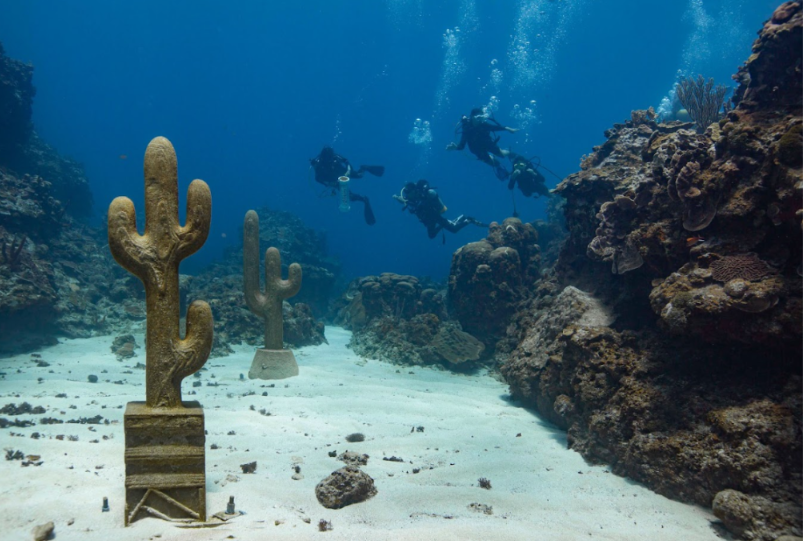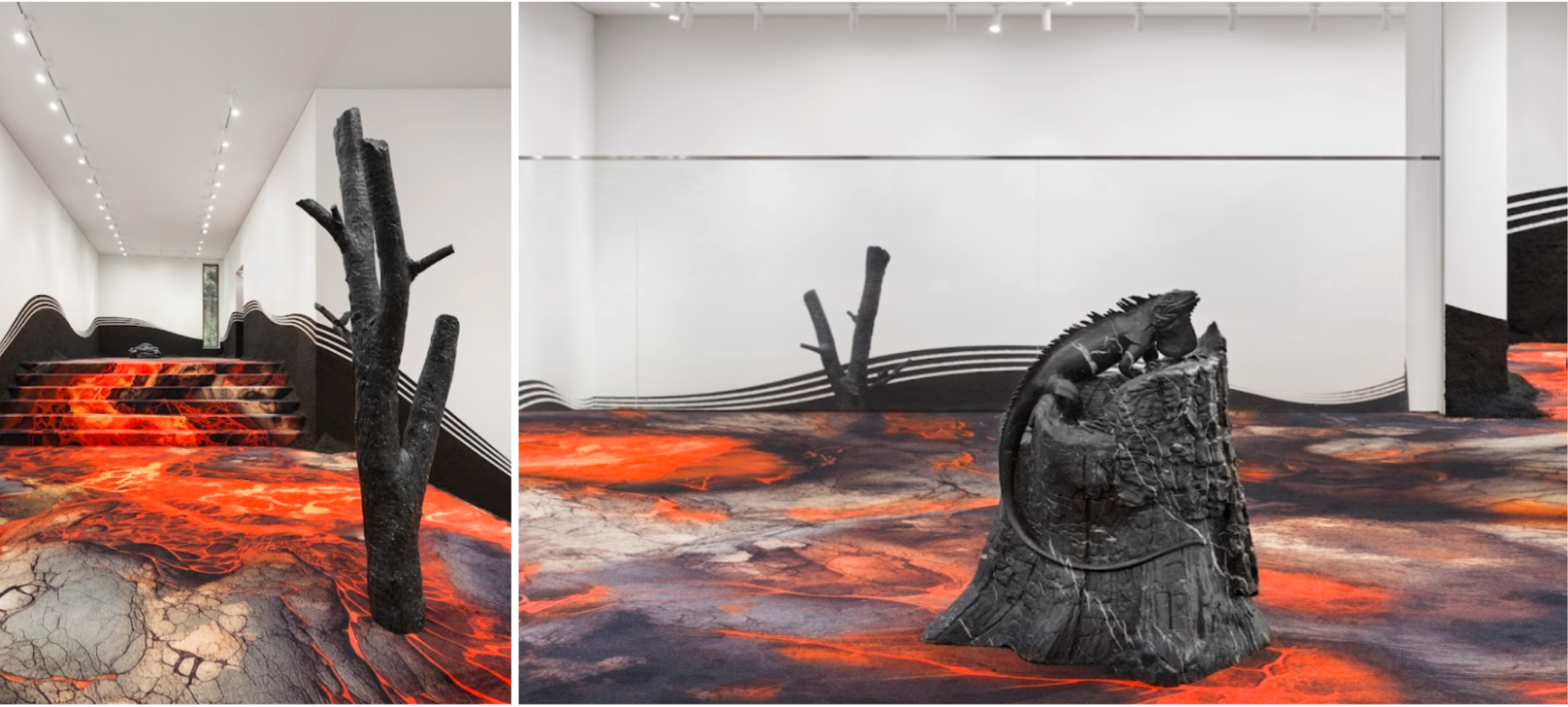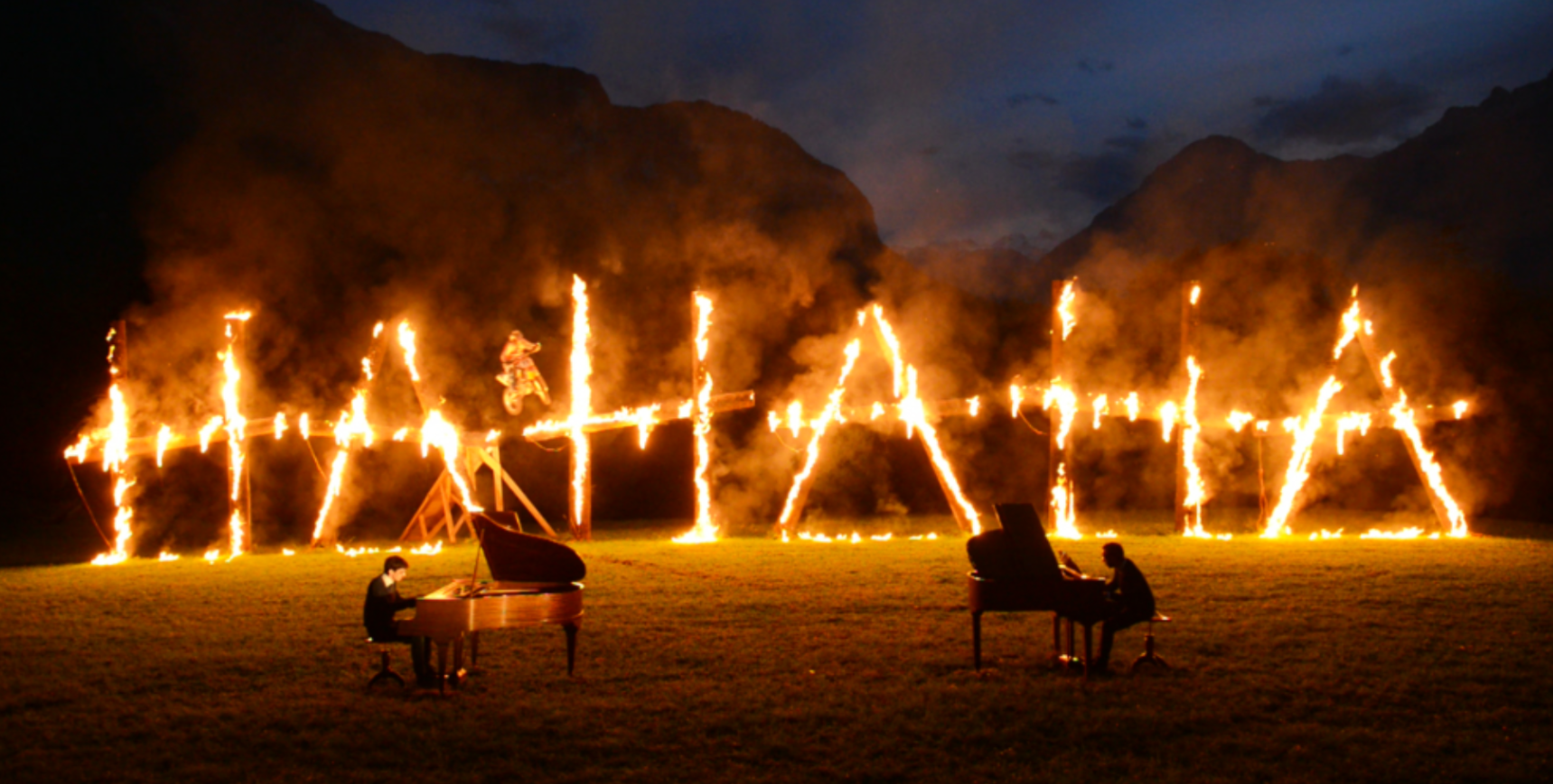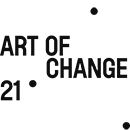Claudia Comte, born in 1983 in Grancy in Switzerland, intertwines significant environmental issues with her sculptural and multimedia work. Her studio-house, in the countryside around Basel, functions in an ecological way and promotes exchanges and experiments. Next step: Art Basel Unlimited at the Art Basel fair, with an immersive piece with strong sensitivity and ecopolitical impact.
Interview by Juliette Soulez for Art of Change 21
When did you start working with a concern for environmental issues?
Growing up in Switzerland, in the countryside, surrounded by forests, lakes, and mountains, shaped the way I see the world. Spending time outdoors gave me an early sense of the rhythms, structures, and textures of nature. I’ve always been drawn to natural forms — the geometries of growth, the patterns of erosion and flow — and to how they can be translated into material and visual language. Over time, my awareness of the fragility of ecosystems and the realities of climate change has been deepened, making questions of ecology, continuity, and resilience even more present in my work. I’m interested in how human and natural systems coalesce, and how art can hold both the wonder and the precarity of those connections.
You immersed a cactus-shaped structure into the ocean in Jamaica in 2019. Can you please explain it?
The Underwater Sculpture Park came out of a residency I did at the Alligator Head Foundation in Jamaica, supported by TBA21–Academy. Through daily dives and long conversations with marine biologists there, I started to understand just how urgent the situation is for coral ecosystems. Witnessing the painstaking work of growing coral in laboratories, as part of the foundation’s regeneration program, led to an expansion of my project’s focus.: a Alongside creating sculptures from fallen endemic trees, I collaborated with scientists to design structures that could actively support marine life.
The work, which is installed on the ocean floor within the East Portland Fish Sanctuary, along the six-kilometer coastline, functions as a coral nursery; a series of large cactus-shaped structures designed to promote coral growth and help regenerate biodiversity. The cactus felt like a natural symbol to use — it’s a plant that survives in extreme conditions — but underwater, the forms take on something much stranger, almost uncanny, like a landscape turned inside out. But what I find is interesting that the sculptures move beyond symbolism, becoming active participants within the ecosystem and contributing directly to ongoing conservation efforts.

Claudia Comte, Underwater Cacti, Jamaica, 2019. Courtesy of the artist.
In 2024, you also worked on the topic of volcanoes in Korea for the “Ascending the Ashes: A tale of Renewal” exhibition. How did you use AI for this work?
I was thinking about how eruptions, even though they’re destructive, are also part of how ecosystems renew themselves over time. I worked with materials like black Marquinia marble, AI-generated images, and soil-based wall painting to create an immersive environment. The sculptures — which were based on 3D scans of extinct and endangered species — and a carpet printed with AI-generated lava flows, were part of the exhibition. The visitors could think about both the geological forces and nature resilience and also about the role we play in tipping that balance.

Claudia Comte, “ Ascending the Ashes: A Tale of Renewal ”, K&L Museum, South Korea, 2024. Courtesy of the artist.
Let’s come back to the 2015 edition of “Dark Mofo” in Tasmania, Australia, when you shot your “Danse Macabre” video. How can humor contribute to ecological consciousness?
La Danse Macabre involves two pianists performing Saint-Saëns’ Danse Macabre while a large wooden sculpture spelling “HAHAHA,” built from spruce tree trunks, is gradually engulfed in flames. As the fire intensifies, a motocross rider jumps through the burning letters, weaving between the pianos in a strange choreography of risk and defiance.
This work is about humor, history and the way we respond to catastrophe — often with a kind of nervous laughter. The symmetry of the onomatopoeia “HAHAHA” intrigued me: it can be read from both sides, and filmed against the Swiss countryside, it almost felt as if the landscape itself was laughing.
 Claudia Comte, HAHAHA on fire, Dark Mofo, Australia, 2015. Courtesy of the artist.
Claudia Comte, HAHAHA on fire, Dark Mofo, Australia, 2015. Courtesy of the artist.
Very recently, OMR Gallery in Mexico exhibited a work inspired by Pablo Neruda. Can you please tell us more about this piece?
I’ve created an immersive installation built around a grid of sixteen monumental marble columns. Each column is engraved with fragments from Pablo Neruda’s poem Lost in the Forest, a text I’ve been drawn to for a long time because of how it captures intimacy, and reverence for the natural world.

Claudia Comte, Lost in the Forest, OMR Gallery, Mexico, 2025. Courtesy of the artist.
Will your next show in Europe for Art Basel Unlimited this year be related to ecology as well?
Yes, the work I’m presenting at Art Basel Unlimited this year continues to engage closely with environmental cycles, drawing from forms and rhythms found in nature — particularly aquatic life, plant structures, and geological time. I would strongly like the stories and rhythms encoded in materials to really be felt. Marble plays a central role in this project: shaped over millennia from ancient ocean beds, it carries traces of ecosystems and geological shifts that long predate us. By working with these materials, I want to open up a space for thinking about the deep processes that shape the natural world and the fragility of the systems that sustain it.
You work and live in the countryside of Basel. More than a studio, it is also a place to experiment and organize collaborative events. How does it work?
My partner, Samuel Leuenberger, and I live and work, in the countryside just outside of Basel, in a sustainable home and studio that reflects the values we both care about. The house is powered by solar energy, built with a focus on energy efficiency and shaped by permaculture principles. Over time, the property has also become a place for collaboration and exchange. Samuel, who is a curator, runs a project space there called Country Salts, where artists, curators, and researchers are invited to develop projects, exhibitions and ideas in a slower, more reflective setting. Especially around times like Art Basel, the studio and Country Salts become sites of gathering — a way of fostering community and creating spaces for dialogue outside of the rhythms of the city and the art market. It’s important to me that the way I live and work feels coherent with the questions I’m exploring in my practice — thinking about sustainability not just in materials, but as a way of being, collaborating, and imagining differently.

Claudia and Samuel Gallery and meeting space in their home in Bennwil, Switzerland
What do you implement regarding the environmental impact of your studio and exhibitions?
Reducing the environmental impact of my practice is an ongoing commitment. I prioritize the use of sustainable, locally sourced and recycled materials whenever possible. I work closely with fabricators to minimize waste and think carefully about the full life cycle of each project — from production to transportation to potential reuse.
I work a lot with wood, it’s one of my primary materials. Most of it comes from fallen trees, or trees that had to be cut down. But for certain projects that require specific forms, like the large raw trunks used in La Danse Macabre, I sometimes need to cut down healthy trees. When that happens, I make sure the wood comes from sustainably managed forests, and for every tree cut, I plant two more. I have also been supporting reforestation initiatives for many years. Still, I don’t know if that fully balances the act of taking. It’s something I struggle with.
I work with materials that carry memory — wood, stone, soil. They hold time within them. But shaping them into something new also means altering them, removing them from their original place. It’s a contradiction I try not to ignore. If anything, it makes me more aware of the weight of the materials I use, and of the responsibility that comes with creating something and of the fact that art is never neutral. Art leaves a mark. Beyond materials, I think about the conceptual footprint of my work: how it can foster sensitivity, responsibility and a more imaginative engagement with the living world.
Author: Juliette Soulez, Art of Change 21
Cover image: Portrait of Claudia Comte, 2020, Courtesy of the artist Other images: Claudia Comte, Courtesy of the artist
Art of Change 21 Journal (formerly Impact Art News), June 2025 #52

